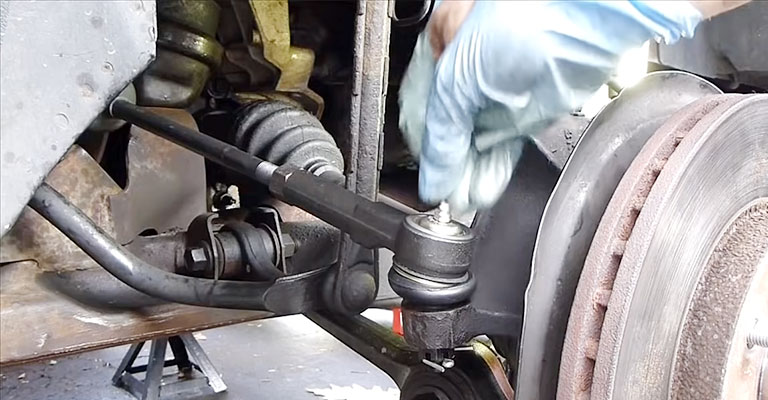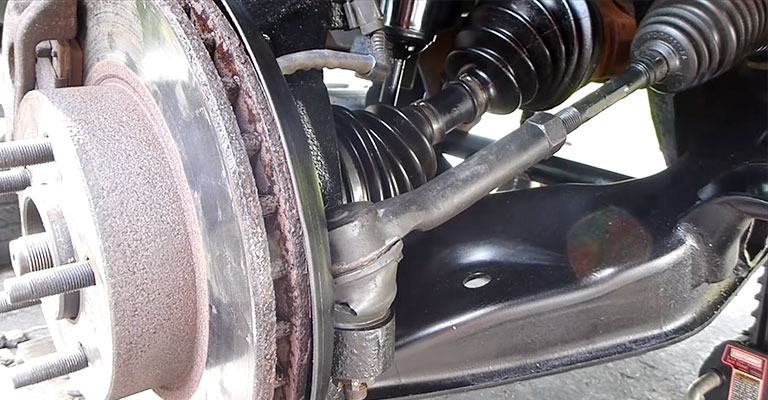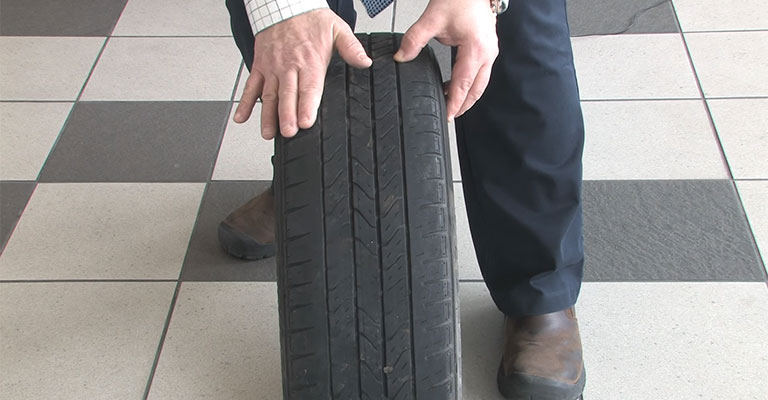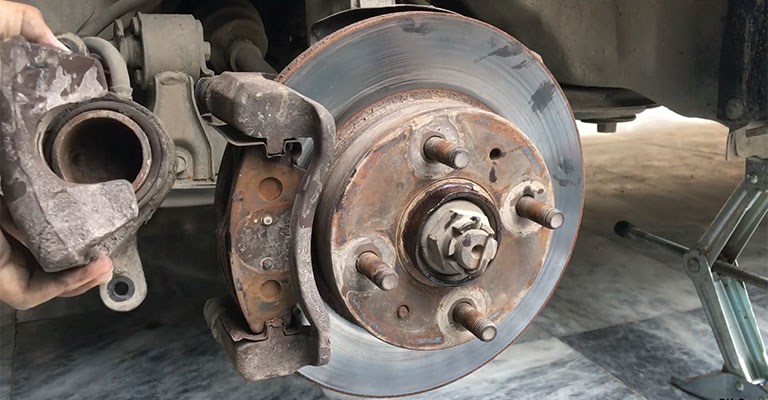If you’re in the driving seat and notice that your car is becoming difficult to steer, that you can’t drive straight, or even that the steering wheel vibrates, it’s probably a bent tie rod causing the issues!
The tie rod is one of the essential parts of your front suspension. With a fit tie rod, you would be able to steer safely. A tie rod gets bent when something is hard-hitting with your car. Also, if your car accidentally rolls off the road into a ditch and gets poorly hurt with any curb or big pothole, it’s probably a bent tie rod the culprit behind it.
Let’s continue reading to know what a tie rod is and how to identify the issue if your tie rods are bent.

What Is Tie Rod?
The tie rod is a crucial component of the car. This specially designed ball socket securely fastens your steering gear to your steering knuckle.
Usually, automobiles have two tie rod ends per front wheel, one inside and one outside. In this position, the outer tie rod sits on top of the inner tie rod. The steering wheel’s toe angles can be changed using the threads.
We all know that steering is an essential component of any vehicle. Because every time you turn the steering wheel, you attach the tie rods to your automobile or truck.
Tie rods are a vital part of maintaining control of your vehicle, regardless of whether you move left, right, or straight.
How To Identify The Bent Tie Rod?

Tie rods are straightforward, and they only bite if you hit something that’ll push the front wheels of your car hard enough to bend them. You may need help to identify how your tie rod gets bent. However, we have compiled a list of facts about placing a bent tie rod that you should be aware of.
Strange sounds
When you turn your car and hear something noisy like a rapid screaming, or slapping sound coming from your front wheel, this could indicate a problem with your front wheel.
Because when you are driving, you shouldn’t hear any loud banging or knocking sounds coming from the front of the vehicle.
This strange sound is caused by a bent tie rod. You will feel the shock of your feet more than usual, especially when traveling over bumps. That means you need to consider getting the tie-rod checked out.
Uneven tire wear

A bent tie rod is one of the factors that might lead to uneven tire wear. Check the tread on your tires in this particular instance. Carefully examine whether your car is out of alignment.
If your vehicle shows rough alignment, your front tires are not aligned with each other, and it could be the tie rods causing the problem. But it can also indicate loose tie rods that should be addressed before alignment.
Steering wheel wandering
Any trembling or swaying of the steering wheel might indicate a bent tie rod. Your tie rod is bent if you experience jerking while driving. Therefore, double-check your car’s front-end tie rod ends if you feel out of control.
Braking issue

If you observe that your car is pulling to one side, particularly while applying pressure to the brakes or the accelerator, you may have a bent tie rod, which can cause your car to pull when it is under torque.
What Happens When A Tie Rod Is Bent?
Tying rods in a knot and bending them is no simple process. When a tie rod is bent, attempting to fix the issue is the worst thing you can do, and it would be awful to rectify the problem by bending the tie rod into its original position or modifying it.
A tie rod can’t completely repair once it has been affected. Repairing a bent tie rod is a significant safety hazard and will most certainly harm the rest of your suspension parts.
Also, it may force you to buy a complete suspension rather than a tie rod. Driving carefully will help you to avoid this significant issue.
Leave a Reply